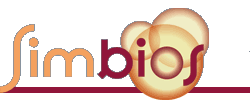Title: Simbios 2.0: Challenges and Opportunities in Physics Based Simulation
Abstract:
As we prepare for the next five years of Simbios, and our grant renewal, we are considering how to build on our successes in the original biological application areas, and how to add new areas with further challenges for building simulation infrastructure. This presentation will briefly summarize our first four years and devote most of the time to discuss the future.
In the first four years Simbios has approached important biological problems in RNA and protein structure and dynamics, myosin dynamics, cardiovascular modeling, and neuromuscular modeling. Simbios has released important elements to its simulation toolkit, SimTK, as well as applications using the toolkit, all available at Simtk.org.
Highlights include: (1) the Simbody toolset for multibody dynamics, (2) OpenSim application for neuromuscular modeling, (3) the Simvascular suite for cardiovascular modeling, and (4) the OpenMM API and implementation for accelerated GPU-based molecular dynamics. Simbios has also created a magazine to catalyze the field of biocomputation, and has events to disseminate its products. Simtk.org now has nearly 3000 users.
The interactive discussion about preparing for the next five years of Simbios will address the following questions:
* What are the high impact biological arenas that offer exciting challenges for physics-based simulation?
* How do we integrate a strategy for multi-scale modeling into our plans?
* How do we ensure that we can build infrastructure at the same time we are helping solve critical medical and biological problems?
* How do we extend SimTK into continuum models?
* How do we bring together molecular simulations and macroscopic simulations at the cellular level?
* What are new areas of computational research that will have a major impact on biology?
Please come ready to discuss your ideas for the renewal of our NIH funding.

